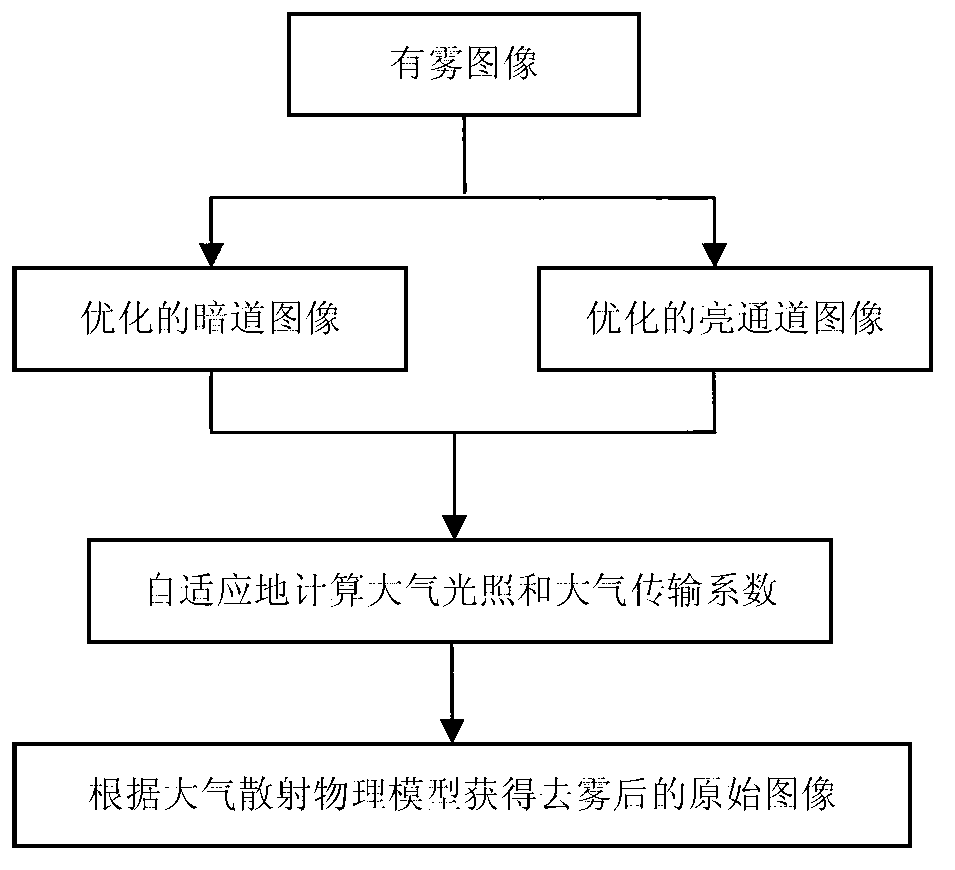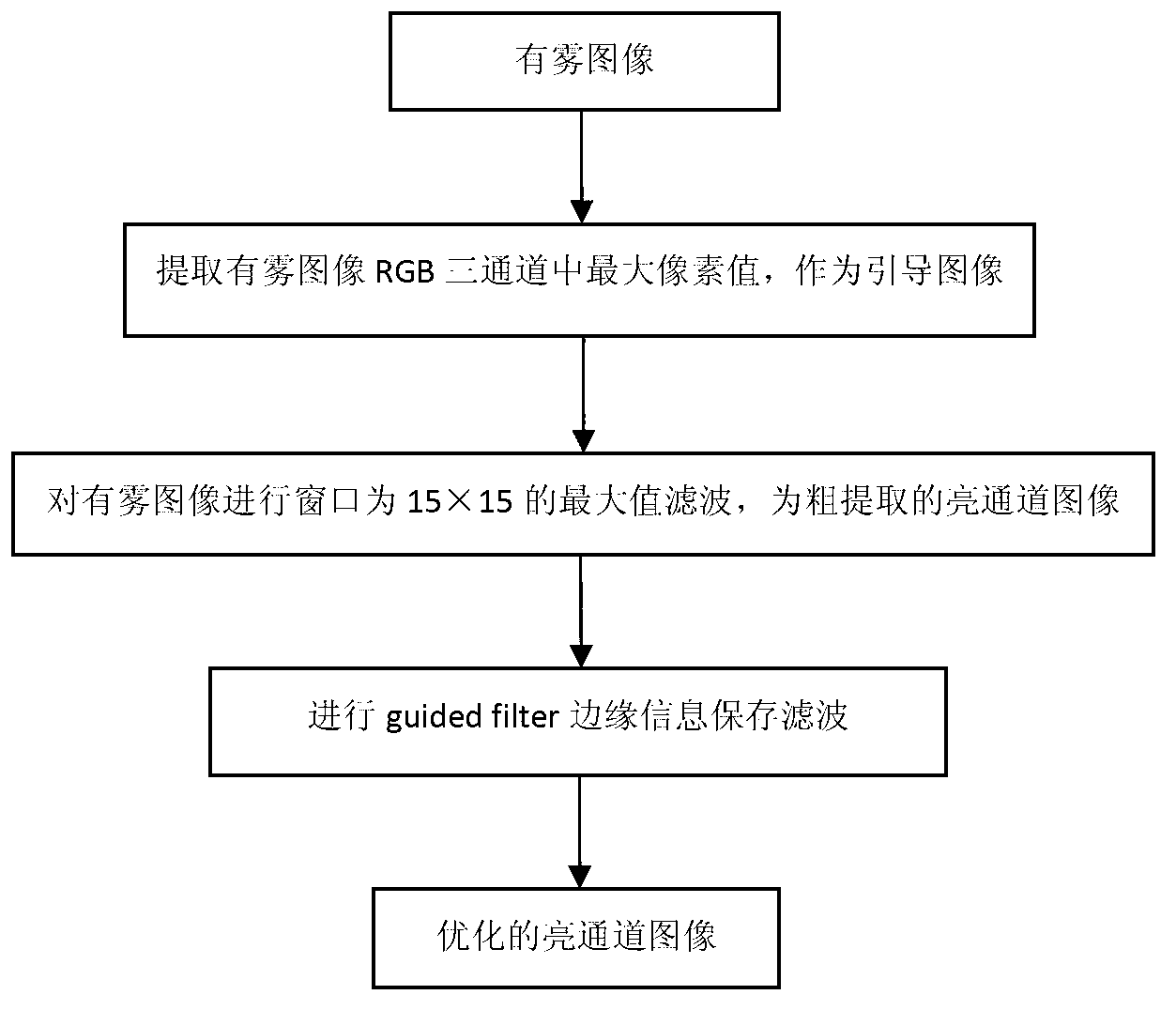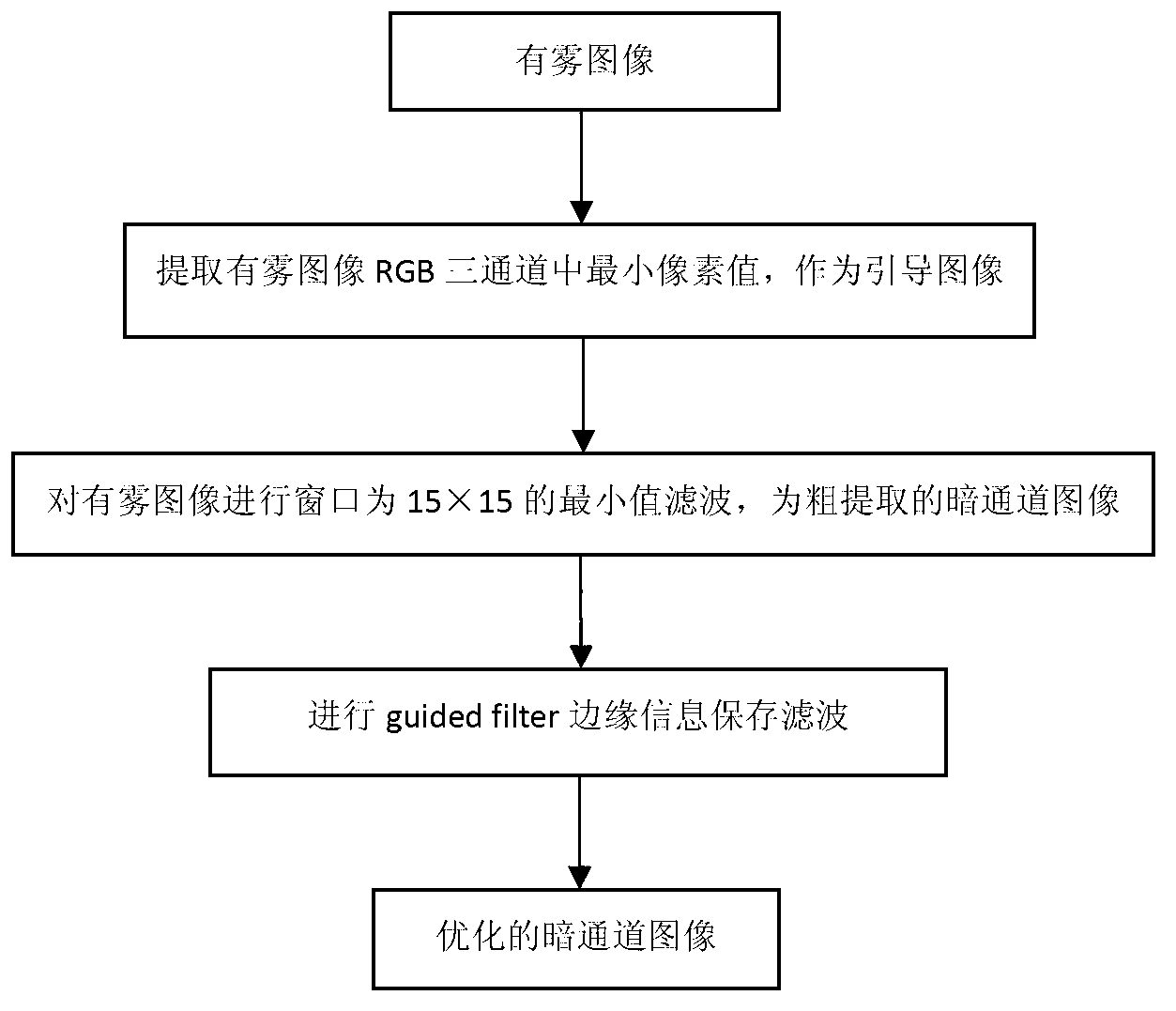Image haze removal method on basis of self-adaptive illumination calculation
An adaptive, image technology, applied in the field of image processing, which can solve problems such as limitations, affecting the normal operation of the system, and image degradation.
- Summary
- Abstract
- Description
- Claims
- Application Information
AI Technical Summary
Problems solved by technology
Method used
Image
Examples
Embodiment Construction
[0049] In order to make the purpose, technical solutions and advantages of the present invention clearer, the embodiments of the present invention will be further described below in conjunction with the accompanying drawings:
[0050] according to figure 1 , the realization method of dehazing mainly has three steps:
[0051] Step 1: According to figure 2 , find the bright channel image I max .
[0052] The value of each pixel in the bright channel image is determined by the following expression:
[0053] J 1 ( x , y ) = max c ∈ { RGB } ( max ( x 0 , y ...
PUM
 Login to View More
Login to View More Abstract
Description
Claims
Application Information
 Login to View More
Login to View More - R&D
- Intellectual Property
- Life Sciences
- Materials
- Tech Scout
- Unparalleled Data Quality
- Higher Quality Content
- 60% Fewer Hallucinations
Browse by: Latest US Patents, China's latest patents, Technical Efficacy Thesaurus, Application Domain, Technology Topic, Popular Technical Reports.
© 2025 PatSnap. All rights reserved.Legal|Privacy policy|Modern Slavery Act Transparency Statement|Sitemap|About US| Contact US: help@patsnap.com



